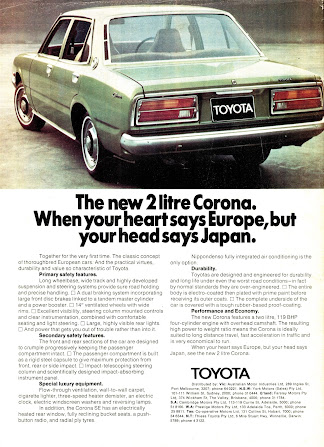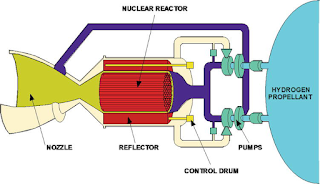Can (pronounced kan)
(1) A sealed container for food, beverages etc, by
convention made from aluminum, iron coated with tin or another metal (has now
become a common form even on parts of the English-speaking world where “tin”
was the traditional use (the form “tin can” covering all bases).
(2) A receptacle for garbage, ashes, etc (often as “trash
can”)
(3) A bucket, pail, or other container used usually for
holding or carrying liquids.
(4) A drinking cup; a tankard.
(5) A shallow, cylindrical (usually aluminum, cardboard
or plastic) container made in various sizes and used for storing and handling
film on cores or reels (often used in the phrase “in the can” to indicate the
completion of something).
(6) In slang (mildly vulgar), of US military origin, the
latrine; the toilet.
(7) In slang, jail; prison (often in the phrase “in the
can”).
(8) In slang (mildly vulgar), the buttocks (always in the
plural).
(9) In audio engineering, a set of headphones which cover
the ears (always in the plural).
(10) In admiralty slang, a depth charge (in the US Navy
used also as a slang term for a destroyer, the “utility” warship in size historically
between a frigate and cruiser).
(11) In slang, to discard something; to throw away.
(12) In slang, to throw something away;
(13) In slang, to stop something (a project, discussion
etc).
(14) In many places, an alternative to “canx” as an abbreviation
for “cancelled” (notably by those who have standardized on three-character codes)
(15) In military ordnance, a standard abbreviation for “canon”.
(16) For some purposes, the abbreviation for “Canada”
& “Canadian”.
(17) To be able to; to possess the necessary qualifications,
skill or knowledge; to know how to; to have the power, authority or means to.
(18) To have the possibility.
(19) To know (obsolete).
(20) To seal a substance (usually food) in a can; to preserve
by sealing in a can (can also be used of substances stored in glass jars etc.
(21) In slang, to dismiss from employment; to fire.
(22) In film & television, to record on film, tape or
some other medium (based on the physical “cans” in which films were stored).
Pre 900: From the Middle English, from the Old English cunnan
(to know, know how) and cognate with the German & Gothic kann (know), the Old
Norse kunna, Old High German kunnan, the Latin cognōscere (to know) and the Sanskrit
jānāti (he knows). The use to describe
the receptacle emerged some decades later and was from the Middle English canne,
can & cane, from the Old English canne and cognate with the German Kanne,
the Old Norse and Old High German kanna, the Irish gann and the Swedish
kana, all of which may be of West Germanic origin. In the Late Latin, a canna was a “small drinking vessel”. Can is a verb & noun, canned
& canning are verbs; the noun plural is cans.
In Singlish, “can” is a versatile word. Singlish (the construct a portmanteau of Sin(gapore)
+ (Eng)lish)) is still known by some language specialists as Colloquial
Singaporean English but the blend is a more popular description and aligns the
variation with flavors like Spanglish (Spanish influenced English), Hinglish
(Hindi influenced English) & Konglish (Korean influenced English). In Singapore, Singlish is used in parallel
with Singaporean Standard English (differing usually from British English only in
the accents although standards in the Far East tend generally to be higher) and it’s been
documented since the 1960s although the linguistic tradition is much
older. In Singlish, the meaning of “can”
can vary according to the relationship between the speakers and the tone of
voice used although essentially it means “yes”, the nuances learned through
use. For example Can or not? means “Can
you do this?” to which the reply is Can
(yes). As a politeness, that might be
responded to by Can meh? (Are you
sure?), the expected answer being Can lah! (Yes of course!). Inevitably, that begat Cannot lah!
In idiomatic use, a “can of worms” is a complicated,
difficult, distasteful problem and if applied in retrospect it’s often of
something which proved insoluble. To “carry
the can” is to take responsibility for something (particularly if challenging or
troublesome); when used in the form “left carrying the can” it implies the task
has been “dumped on one”, all others having evaded task. It’s believed “carry the can” has its origin
in the undesirable task of “latrine duty” in the military which required one literally
to carry away from the temporary latrines “cans of shit” (also the origin of “can”
as a slang word for “toilet”. To “kick
the can down the road” is delay dealing with a problem, the idea being of not then
picking up the can as one eventually must.
“In the can” indicates something is complete, arranged, agreed or
finalized and was from film production, the cores or reels of processed and
edited films being stored “in the can” (a shallow, cylindrical (usually aluminum,
cardboard or plastic) container made in various sizes to suit different film
stocks. To be a “can do” sort of person
is to be dynamic, positive and anxious to accept a challenge. The politician Campbell Newman (b 1963;
premier of the Australian state of Queensland 2012-2015) described himself as “Can
do Campbell” and enjoyed a fine election victory but it ended badly; in the
next he suffered one of the bigger landslides in modern political history
losing even his own seat. “Canned
laughter” was the process by which “laughter tracks” were spliced into the recordings
of television comedies for subsequent broadcast, emulating a live (and
appreciative) audience. It’s often been
regarded cynically but all the research suggests it really did work. The popular phrase ”no can do” indicates an
inability or unwillingness to do something.
Yes we can
Barack Obama (b 1961; US president 2009-2017) more than
once observed he thought the speeches he wrote were better than any which came
from his speechwriters and one can see his point but one of the reasons his
presidency is regarded as insubstantial is that his words were more impressive
than his deeds. He was elected president
and awarded the Nobel Prize for the same reason: He wasn’t George W Bush
(George XLIII, b 1946; US president 2001-2009).
He promised much, exemplified by the phrase “…yes, we can” which expertly
he worked into a speech he delivered in Nashua, New Hampshire on 8 January
2008, during the Democratic primaries while campaigning against crooked Hillary Clinton (b 1947; US secretary of state 2009-2013) for the party’s nomination:
…and tonight, I think about
all that she's seen throughout her century in America — the heartache and the
hope; the struggle and the progress; the times we were told that we can't and
the people who pressed on with that American creed: Yes, we can.
At a time when women's
voices were silenced and their hopes dismissed, she lived to see them stand up
and speak out and reach for the ballot. Yes, we can.
When there was despair in
the Dust Bowl and depression across the land, she saw a nation conquer fear
itself with a New Deal, new jobs and a new sense of common purpose. Yes, we
can.
When the bombs fell on our
harbor and tyranny threatened the world, she was there to witness a generation
rise to greatness and a democracy was saved. Yes, we can.
She was there for the buses
in Montgomery, the hoses in Birmingham, a bridge in Selma and a preacher from
Atlanta who told a people that "We Shall Overcome." Yes, we can.
A man touched down on the
moon, a wall came down in Berlin, a world was connected by our own science and
imagination. And this year, in this election, she touched her finger to a
screen and cast her vote, because after 106 years in America, through the best
of times and the darkest of hours, she knows how America can change. Yes, we can.
America, we have come so
far. We have seen so much. But there is so much more to do. So tonight, let us
ask ourselves: If our children should live to see the next century; if my
daughters should be so lucky to live as long as Ann Nixon Cooper, what change
will they see? What progress will we have made?
This is our chance to answer
that call. This is our moment. This is our time — to put our people back to
work and open doors of opportunity for our kids; to restore prosperity and
promote the cause of peace; to reclaim the American Dream and reaffirm that
fundamental truth that out of many, we are one; that while we breathe, we hope,
and where we are met with cynicism, and doubt, and those who tell us that we
can't, we will respond with that timeless creed that sums up the spirit of a
people: Yes, we can.
As a rhetorical device, the repetition of “yes we can”
worked well and he deserves credit also for the skill with which it was
delivered; few US politicians since Ronald Reagan (1911-2004, US president
1981-1989) have shown such a flair for timing and effect and Reagan had the
advantage of decades of practice under the tutelage of some of the best film
directors. But in office, reality bit
and Obama soon understood why so many of his predecessors had commented that one
surprise as president was how difficult it was to get anything done and
the more that involved change, the harder it was. On the night, “yes we can” thrilled many but
among Republicans and even some factions in his own party, the spirit was
somewhere between “no we probably shouldn’t” and “no we won’t”. Still, he may have convinced himself because
in his farewell address in Chicago in January 2017 he reprised “yes we can”
before pausing for effect and adding “…yes we did”. Dutifully, the audience applauded.

Soda agnostic Lindsay Lohan with (clockwise from
top left) can of Rehab, can of Coca-Cola, can of Red Bull, Can of Pink Ginseng,
can of Sunkist Soda & can of Pepsi Cola.
The car is the "Rehab" shot is a 2006 Mercedes-Benz SL 65
(R230; 2004-2011) which would later feature in the tabloids after a low-speed
crash.
In the matter of can & may.
"Can" and "may" are modal verbs and the
grammar Nazis police their use with some relish and for those who care about
such things, there are frequent instances of misuse. Can & may are sometimes interchangeable:
just about anywhere on the planet it can at some time rain but it’s as correct
to say it may at some time rain. In some
cases too, neither can nor may might be the appropriate word to use even if
both are grammatically correct: It’s
really not helpful to ask: “Can I believe anything said by crooked Hillary
Clinton?” or “May I believe anything said by crooked Hillary Clinton?” because the
better choice is “Should I believe anything said by crooked Hillary Clinton?” The answer is of course: “No”. Still, the general principle is “can” is used
of possibilities and “may” of permissions”, illustrated by the companion
sentences “I can swim” & “May I go swimming”. One of the quirks of English which may
account for some the undue popularity of “can” is that while can’t has since
the eighteen century been one of the language’s most commonly used contractions,
“mayn’t is listed by most authorities as rare or archaic (though extinct might
more reflect reality). That was probably
because can’t more effortlessly rolls from the tongue.

Campbell's Soup Cans (1962), acrylic with metallic enamel paint on canvas by Andy
Warhol (1928–1987).
One of the landmarks of pop-art, Warhol’s Campbell's Soup
Cans (1962), is a piece which depends for its effect, not on its content but
its intent and there was a randomness of chance in the choice of subject. The artist explained it by revealing for some
twenty years he’d been having a can of the stuff for his lunch, thereby accounting
for the motif of “the same thing over and over again”, a idea he’d reprise with
variations for the rest of his life. Had
his habit been to enjoy sardines for lunch instead, the painting would have
looked different but the meaning would not have changed. It’s was also an coincidence of capitalism
that 32 cans appear, that happening because at the time the company offered
that many flavors but had they offered 36, the work would have contained that
many. Presumably, had the range been 29,
31 or some other number symmetrically more challenging things might have differed
in detail but the concept would have survived.
Repeating the nearly identical image, the canvases stress the uniformity
and ubiquity of the product’s packaging and subvert the idea of painting as a
medium of invention and originality. Although
pop-art had at the time a newness about it, Campbell's
Soup Cans was another step in the path art had taken since 1917 when Marcel
Duchamp (1887–1968) had submitted a porcelain urinal for display in an art
gallery, his purpose being to have people question whether art was defined by
what it was or the context in which it appeared. Does anything become art if it's put in an art gallery? It was an confronting question and we’ve been
living with its implications since.

Campbell's Soup (Limited Editions).
On several occasions, the Campbell brand has taken
advantage of the famous association and produced editions of soup cans with
Warhol style labels complete with the artist's printed signature. The first two runs used color schemes close
to those which appeared in the 1962 work but the most recent was rather more garish
with some changes to the layout. A
notable difference was the customers weren’t required to purchase 32, the cans
sold individually. In a development which Warhol would doubtless have applauded, the cans soon appeared on sites like eBay for three figure US$ sums, a healthy appreciation for their original RRP between US$1-2.






























